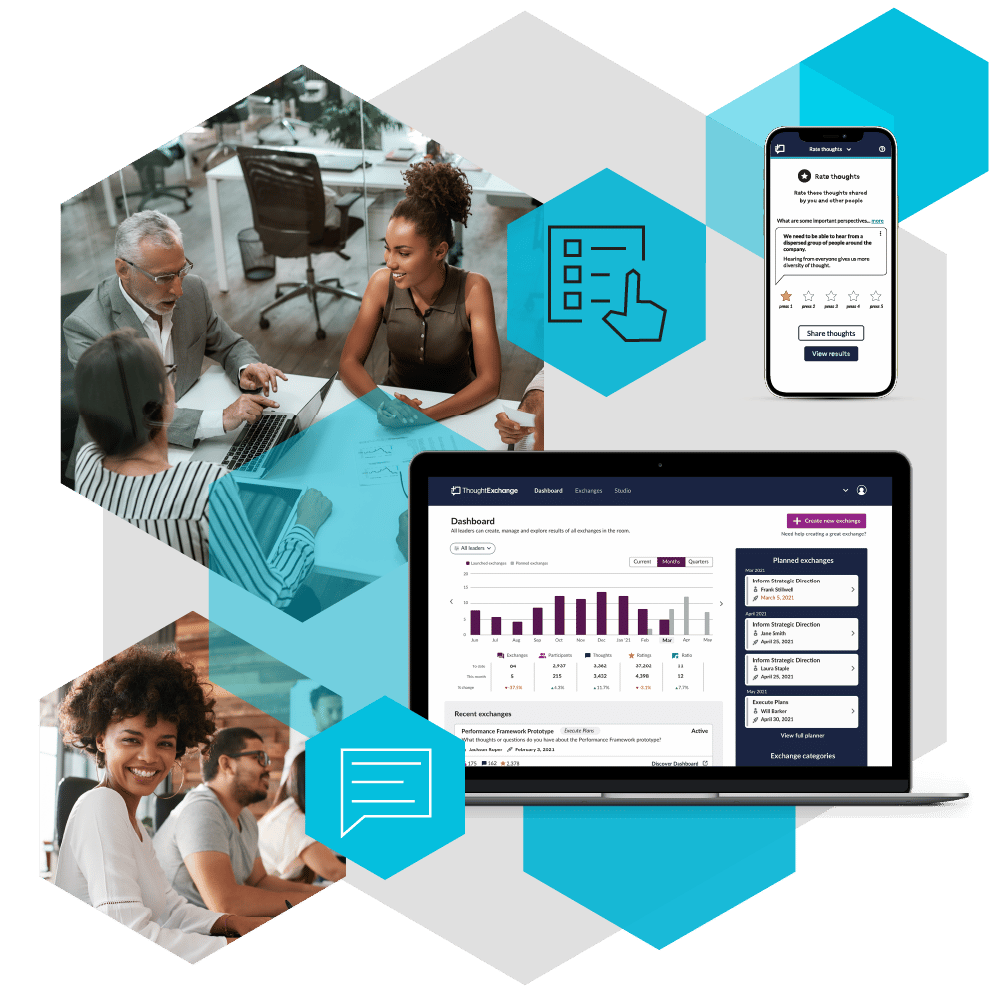Community Engagement 101
A Comprehensive Guide for Education Leaders
How do you engage your community? Savvy education leaders know engaged communities create thriving districts. With effective community engagement, you’ll be able to tackle your district’s most contentious issues with:
- Increased community trust and buy-in
- Increased community ownership and satisfaction
- More effective decision-making
Here’s a step-by-step guide on how today’s education leaders can create long-term and sustainable community engagement in their districts.
Table of Contents
- What is community engagement?
- Creating a winning community engagement strategy
- Building a better community engagement plan
- Choosing the best community engagement software
- Engaging your community to make better decisions
- Unlocking school potential through community involvement
- Uncovering a superintendent’s approach to community engagement
What is community engagement?
“When educators include parents and other stakeholders (e.g., profit and non-profit businesspersons, directors of educational foundations, and other citizens with an interest in school district operations) in thoughtful, well-run deliberations, the process can pull people together, generate innovative solutions, strengthen buy-in, and build trust.”
–Superintendents Building Public Trust and Engagement in Five Public School CommunitiesCreating a winning community engagement strategy
A community engagement strategy is key for tackling issues like budgets, school safety, curriculum or policy changes, and culture building.
To create a successful strategy, you’ll need to listen to your community—educators, staff, students, and parents—and act on their insights.
Your community engagement strategy will be based on the required initiative/reform, the people involved, and the community’s engagement level.
It outlines:
- The type of community engagement
- When it happens
- What communication channel should be used
Education leaders make more supported decisions by leveraging their community’s insights, starting with an effective community engagement strategy.
Building a better community engagement plan
Building on your community engagement strategy, a robust community engagement plan is essential for your district’s success.
A community engagement plan outlines outreach and public participation activities, including assigned roles and timelines for new or recurring projects that will impact the community.
Where your community engagement strategy explains why your district will need specific resources and take specific actions, your plan will outline the steps to achieve the strategy.
Consider your project’s purpose and objectives, conduct a community analysis, decide on engagement methods, and work through potential risks and challenges.
With your step-by-step plan, you’ll be ready to tackle your district’s most pressing issues—and succeed!
Choosing the best community engagement software
Building your community engagement strategy or nailing down your community engagement plan? You’ll need the right tech. Comprehensive community engagement software gets you from insights to action faster. Engage thousands of community members while tackling your district’s most critical issues.
Community engagement software is a tool for streamlining your community engagement initiatives. It allows education leaders to quickly gather feedback from tens, hundreds, or even thousands of people. It also facilitates candid, collaborative community conversations that help districts access the depth of data they need to realize their goals.
Whether you’re working on a strategy or plan, performance, or culture, the right community engagement software will help you achieve your goals more quickly.
Engaging your community to make better decisions
There are many ways to lead a group, an organization, a movement, a school district, or even a government. In today’s connected and complex world, antiquated leadership styles don’t fly—and may even be more of a hindrance than a help.
To help employees, citizens, and community members navigate faster and more nuanced environments, leaders must be able to work collaboratively and, in some cases, “lead from behind.” That means involving your community in the decision-making process.
Unlocking school potential through community involvement
Schools play an integral role in every community. And since children grow up to become members of those same communities, districts should ensure schools deliver optimal learning environments to ensure happy, healthy, successful students.
While families and community partners often donate their time and resources to help schools thrive, community engagement lies with schools, their school districts, and their leaders.
Engage your community to see these benefits and more:
- More access to learning opportunities
- Improved student retention
- Increased optimism among teachers
- Better attendance rates
Uncovering a superintendent’s approach to community engagement
New superintendents have important work to do. But the lack of public trust in government, academia, and education makes it tough.
Joined a district with an entrenched culture of mistrust or political division? Want to rebuild broken relationships due to a breach of trust by the previous leadership? Laying the groundwork of confidence in your new leadership? Building trust with your community is essential for success in your role.
“Being chosen does not mean being trusted. New superintendents have won over the school board by being hired, but the bigger challenge is to gain the trust of the local community—and other civic leaders.”
– The Superintendent Survival GuideEngage your community with open, two-way communication—listen to their needs and act on their insights. Collaborate with your community to make positive changes in your district and succeed as a new superintendent.
Find out how ThoughtExchange builds trust to help new superintendents succeed.
Turn insights into action
"ThoughtExchange has allowed us to be truly responsive to our community. We’re not just going to ask them for feedback, we’re going to move on it, or not, and have a reason why. It has allowed us to make manifest the promises we’ve made."
– Dr. Quintin R. Shepherd, Superintendent











